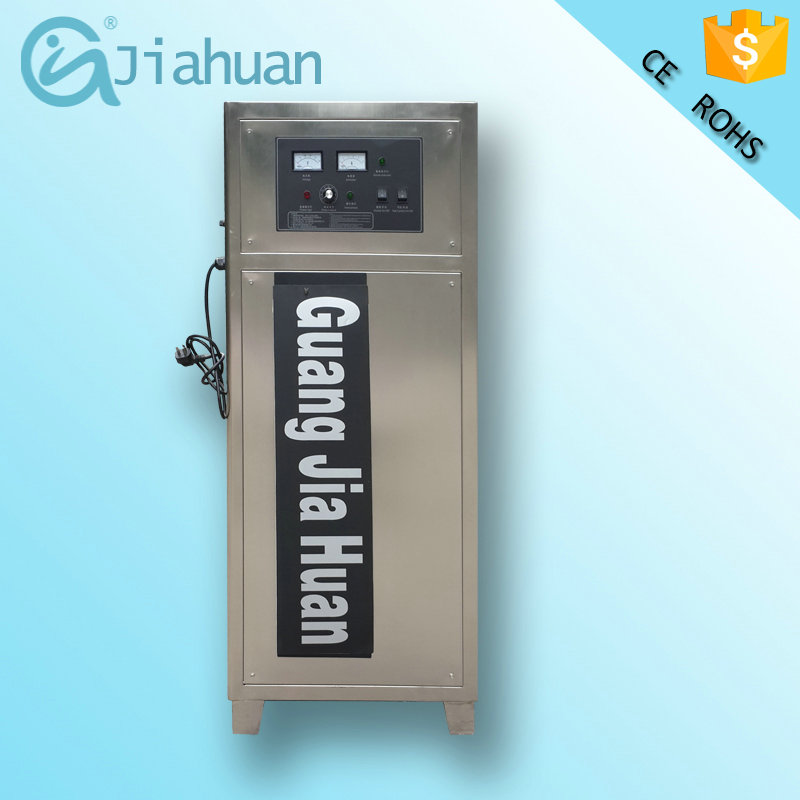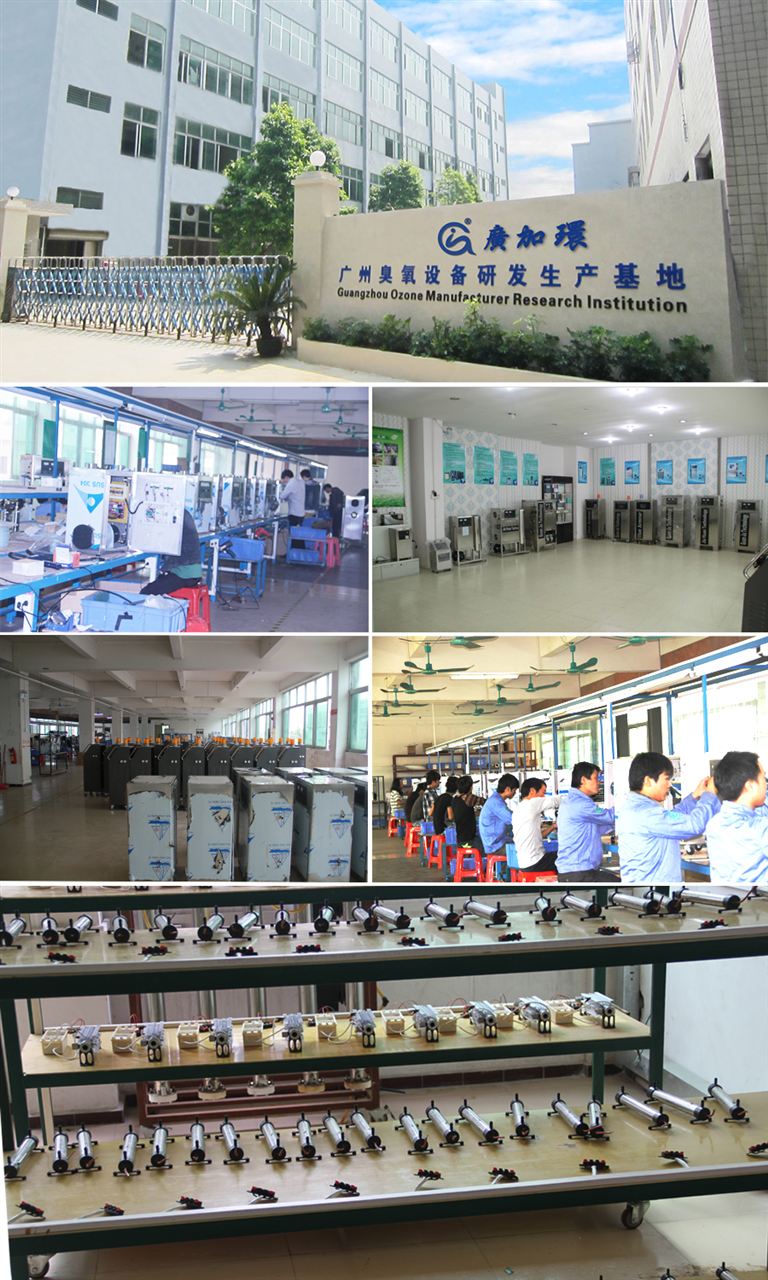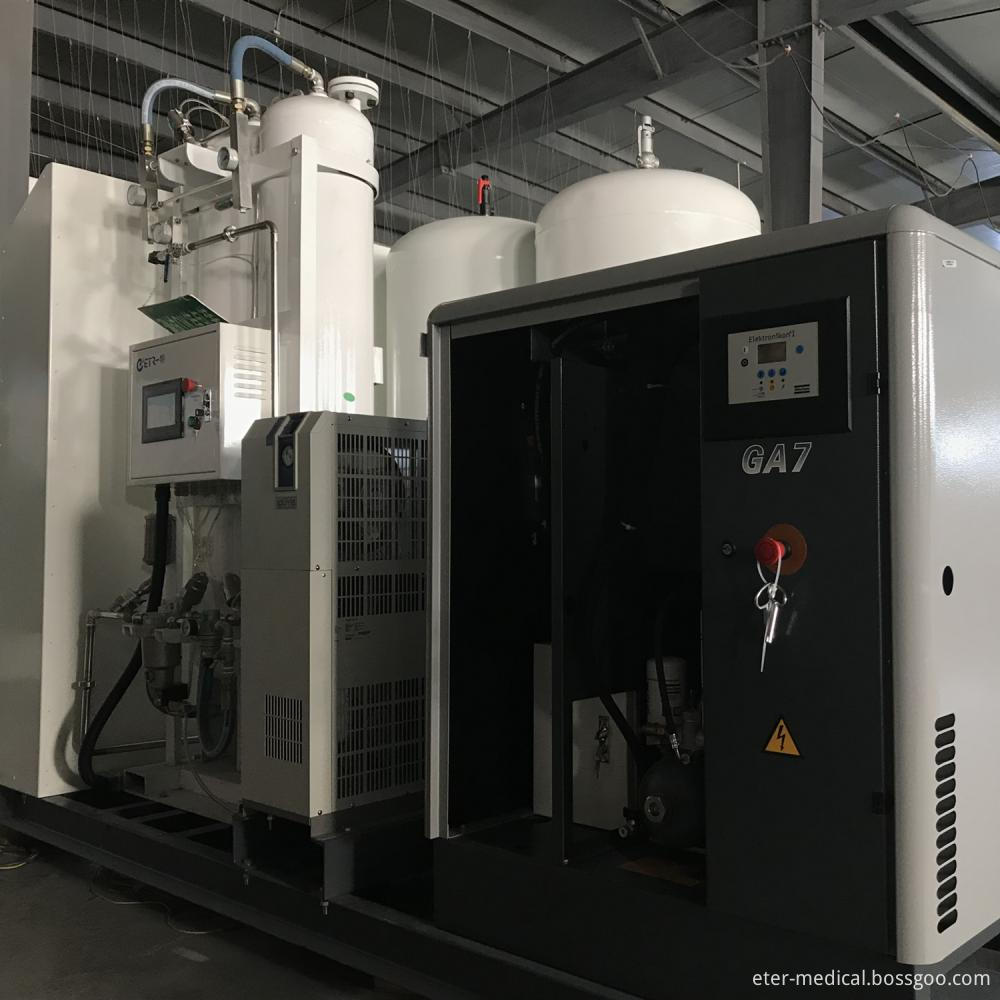About the use of ozone in the sterilization of pharmaceutical companies
1. Disinfect the clean area with a central air conditioning purification system (HVAC)
GMP is the basic regulation for the management of pharmaceutical production enterprises in China. Pharmaceutical manufacturers with different dosage forms should do the verification work according to national regulations. Ozone sterilization is one of the recommended important sterilization methods in the GMP management of pharmaceutical manufacturing enterprises in China. Defects of traditional sterilization methods and characteristics of ozone sterilization There are three main methods of sterilization: one is ultraviolet sterilization, the other is reagent sterilization, and the third is heat sterilization. These methods have been used by people, and their safety and reliability have been confirmed by long-term practice, but they also have their own defects. Ultraviolet rays are sterilized by light wave radiation. The light wave propagates in a straight line, and its irradiation intensity is inversely proportional to the square of the distance. Therefore, the sterilization effect is only obtained at the irradiated position and the irradiation standard is reached, and the sterilization ability of all the ultraviolet lamps is weakened with the increase of the use time. The main problem of UV sterilization is that its ChuangTou ability is small, the disinfection effect is not good in places where ultraviolet radiation is not available; its sterilization ability decreases with the increase of use time, and the lamp life is short, the replacement is too frequent, and the operation cost high. Chemical reagents have a large taste and cannot be naturally discharged. It requires air conditioners to replace fresh air for a long time, thus increasing energy consumption and secondary pollution. Because the remaining drugs are directly discharged into the atmosphere, it will cause pollution to the surrounding environment. Such as formaldehyde fumigation, troublesome operation, long fumigation time, there are secondary pollutants, there is a certain harm to the revolution. It takes 8 hours to do a formaldehyde fumigation, and there are many residues attached. It is not suitable to remove it. It is a good method to disinfect with ozone. The method is to directly place the ozone generator in the air passage of the air conditioning purification system, which is called a built-in ozone generator. Ozone is sent to the clean areas along with the airflow of the air duct, and the clean area is disinfected and sterilized. The remaining ozone is sucked into the air return and taken away by the central air conditioner. It is also possible to place the ozone generator outside the central air-conditioning tuyere, to drive the ozone into the air duct of the central air conditioner, and then to be sent to each clean room, which is called an external ozone generator. The external ozone generator is easy to install and repair, but the manufacturing cost is higher. The disinfection effect is the same in both methods. According to the requirements of the Ministry of Health disinfection technical specifications, the ozone concentration for air disinfection is 5ppm, but in fact, the disinfection of the clean area is not only the disinfection of the air, but actually the disinfection of the surface of the object, so the concentration at the time of design Generally should be greater than 10ppm. Start 1-2 hours before going to work every day, and start up for 1 hour after work, you can ensure that the floating bacteria and settled bacteria in the clean area meet the GMP requirements within one day. 
From the test report of the pharmaceutical factory that sterilized with ozone, it can be seen that the bacteria test is all qualified. Completely replaces the headache of formaldehyde fumigation and large disinfection. At the same time, the non-production operations are reduced, the energy consumption is reduced, and satisfactory results are obtained.
For the clean area without the vent or only the air inlet, the air return without the air return, the experimental inspection area, etc., the FSY-K series designed by Zhongao Company can quickly transfer the ozone to various places in the space, and the computer timing control , no dead angle, easy to use, can achieve 100 levels of cleanliness.
In the pharmaceutical factory, generally speaking, the clean area is large, and the central air-conditioning purification system is used to complete the purification and disinfection of each clean area. The method is that the ozone generator is directly installed in the main pipeline of the central air-conditioning purification system, or the rear end of the intermediate effect filter in the air-conditioning box, and the power control box is placed in the machine room. When disinfecting, about 90% of the fresh air inlet valve and the external discharge valve are closed, so that the HVAC system and the clean area form an internal circulation state. Daily air sterilization only needs to be turned on for 1~1.5 hours, instead of chemical reagent fumigation for large disinfection, it only takes 2~2.5 hours. The advantage of sterilizing with this scheme is that the purified air is used as the carrier of ozone (the air volume of about 60 m3 per minute can be passed through the ozone generator), and the ozone can be rapidly diffused into the clean room controlled by the HVAC system, and the ozone concentration is evenly distributed. In the clean area, no disinfection equipment is added to achieve the purpose of sterilization of the clean room; at the same time, the HVAC system has the effect of killing bacteria and mold. In practice, it has been found that ozone can also act as a bacteriostatic agent for high-efficiency filters and prolong their service life.
.
2. Concentration standards for ozone applied in central air conditioning systems in the pharmaceutical industry
The inactivation concentration of ozone on airborne microorganisms and the inactivation concentration of microorganisms on the surface of the object are specified in Section 8.2 of the Ozone Application Section of the 4.4.1 Ozone Application Code promulgated by the Ministry of Health in December 1991. The enclosed air is treated with ozone at a concentration of 5 to 10 mg/m3 (equivalent to 2.5 to 5 ppm) for 30 minutes; 20 to 30 mg/m3 (equivalent to 10 to 15 ppm) is required for the settled colonies on the surface of the object. The purpose of ozone application in the pharmaceutical industry is to replace ultraviolet and chemical fumigation, and to disinfect the settled colonies on the air and mechanical equipment and dielectric materials throughout the clean area. The required ozone concentration is 10~15ppm, which is equivalent to 20~30mg of ozone content per cubic air.
3. Calculation method of ozone application amount in air conditioning system
Set: V1 is the space volume of the clean area, V2 is the space volume of the HVAC system, and V3 is the loss of the fresh air added to the positive pressure of the clean area. The total volume (V) of the sterilization space is calculated as: V=V1+V2 +V3
Determination of V3: According to the practice, a more reliable empirical formula is summarized as follows: V3≈HVAC system total air volume m3/h*25% (conventional fresh air replacement rate)×10-20% (maintaining fresh air volume supplemented by positive pressure in clean area) × 39% (the budget value of ozone half-life when ozone is applied), that is, V3 = total circulating air volume of HVAC system × 1~2%.
Selection of ozone generator: Firstly, according to the efficiency of ozone sterilization, the concentration of ozone sterilization (C) is determined according to the standard of "Disinfection Technical Specification": for airborne bacteria, ozone sterilization concentration is 2~4ppm; Settling colonies on the surface, the concentration is 10~15ppm (refer to the "Disinfection Technical Specifications" for ozone sterilization concentration). The natural half-life (S) of ozone is about 23 minutes in the reference state and 61% in one hour. Design: After using ozone sterilization for 60 minutes to reach the required concentration, continue to maintain for a period of time (1~1.5 hours), the mechanical equipment and the surface sedimentation colony of the building body can be completely killed, and the effect of chemical fumigation and large disinfection can be achieved.
Example: The total volume (V) of the sterilization space is 1000m3. The sterilization requirement is to replace the chemical fumigation and disinfection, and sterilize the sediments on the surface of the equipment and the building body. According to the above requirements, the ozone concentration (C) in the air should reach 10ppm or more (in the working state, converted to 19.63mg/m3), and the ozone natural decay rate (S) after the ozone generator works for one hour is 61%. Ozone generation amount g/h (W): W = CV / (1 - S) = 19.63 × 1000 / (1-61%) ≈ 50.33 (g / h) An ozone generator having an output of 50 g per hour can be selected.
4. Disinfection application of ozone in pharmaceutical factories:
(1) Sterilization of space
For clean rooms other than central air conditioning purification systems, or other rooms that require sterilization, separate sterilization is required. The method is to use an ozone generator and install it directly in the room. Set the disinfection time according to the need, it will automatically shut down after the end of disinfection, so it is very convenient to use. Use according to the size of the room space. As long as the ozone concentration is met, the purpose of sterilization can be achieved. It is much more economical than fumigation of the room with chemical reagents. It can completely replace chemical fumigation, shorten the disinfection time and avoid secondary pollution.
(2) Surface disinfection of articles
In the process of drug production, it is often necessary to disinfect the surface of raw materials, tools, packaging materials, production sites, etc. The traditional method is to use ultraviolet disinfection, but the disinfection is not complete, there are disinfection dead angles, fast decay, and some kinds of bacteria in a specific environment can not kill and other drawbacks. According to the "Disinfection Technical Specifications", for the surface of an object immersed in ozone gas, the surface bacteria can be killed by contact for a period of time.
(3) Disinfection and sterilization of water
There are many places where water is used in pharmaceutical factories. There are differences in medical water, disinfection water, cleaning water and drinking water. According to different water quality requirements, different process flow is adopted, and the disinfection process can achieve satisfactory results by the general ozone water treatment method.

Compacted Oxygen Generator
The medical PSA oxygen generator system consists of the air compressor, air-water separation device, dryer, air dew point monitoring device, multi-stage filter, air buffer tank, air moisture monitoring device, oxygen generator, oxygen buffer tank, flow meter, online oxygen monitoring device, cylinder manifold system, smart electric control cabinet, computer monitoring system, remote network monitoring system and oxygen booster system.
For the compacted oxygen generator system, all the parts can be compacted together and skid mounted. So it is easy for the installation and operation and maintenance.

Compacted Oxygen Generator,Oxygen Production Line ,Oxygen Produce Machine,Oxygen Genration System
Hunan Eter Medical Co., Ltd. , https://www.eter-tech.com